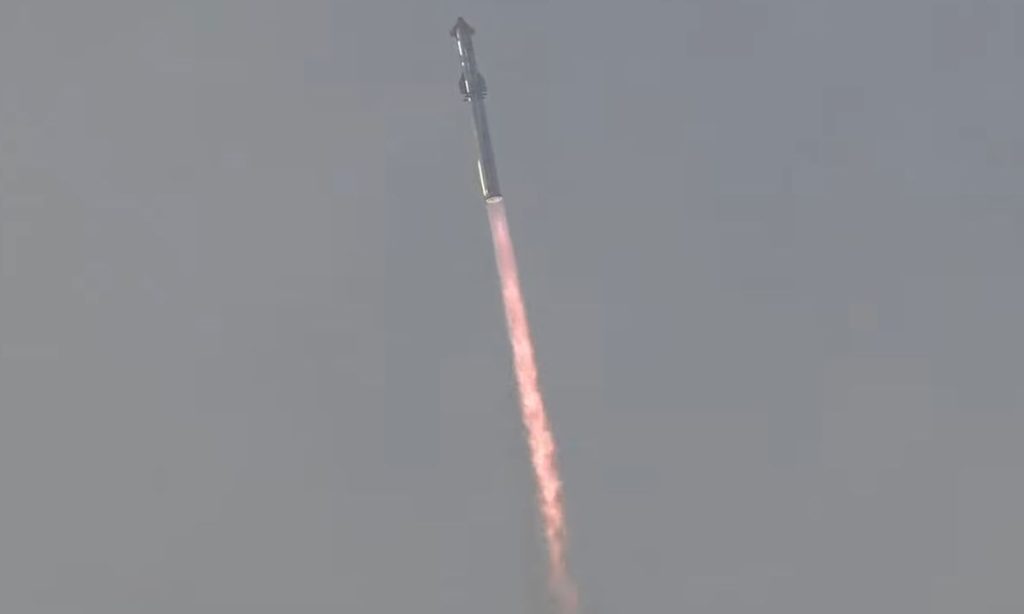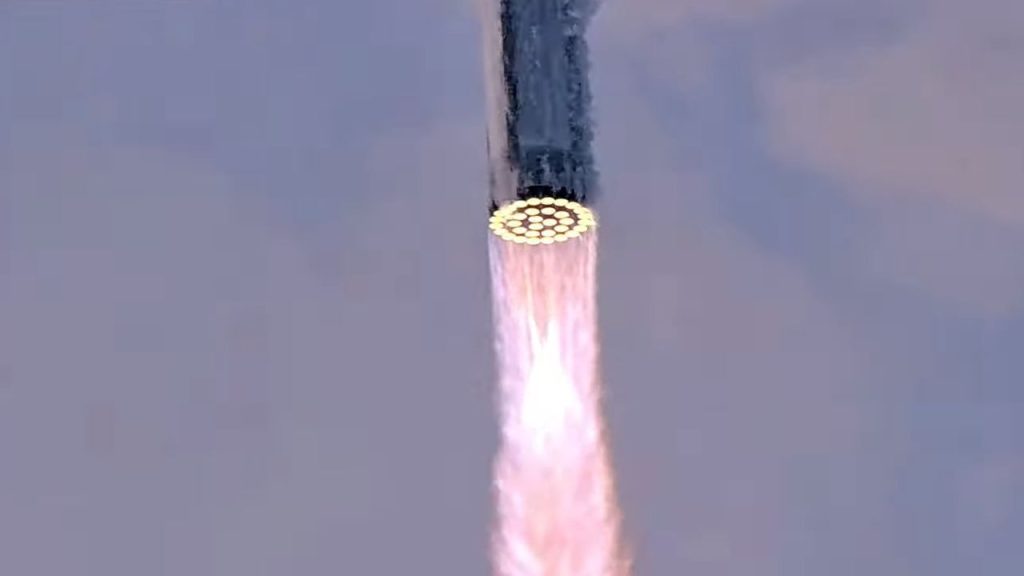
SpaceX launched Integrated Flight Test 3 from Boca Chica on 14 March 2024 1325 UTC in a major test of the Starship-Superheavy launch system. The suborbital flight flew farther than ever before, and technically was within reach of, but did not get to, orbit. Even after a hot fire separation and “orbital insertion burn,” Starship’s trajectory was suborbital. But given the other issues faced in the flight, it was probably the right call to make ditching the craft the default plan.


The issue cropped up later than the last test, but still fairly early. Seven minutes in, Superheavy 10’s engines flamed out during descent and were unable to restart. Though the grid fins were able to straighten the booster as it fell, and a few engines did manage to catch flame, the planned descent profile needed several more engines (nominally, 13) to control speed for a gentle drop into the Gulf of Mexico. With the grid fins keeping it upright and 3 or 4 engines online possibly giving as much as 25% of planned thrust, Superheavy wasn’t quite in free fall, but the booster was still ordered destroyed by the range safety officer as it plunged into the sea at supersonic speed.

The disappointment continued 45 minutes into the flight as Starship 28 took its final dive. While rolling around for reentry over the Indian Ocean, far southwest of Java and well west of Gascoyne, Western Australia, it was sailing through a squall of its own detached thermal tiles, and seemed sluggish in attempts to control yaw and roll. As it reached the atmosphere, its orientation drifted, possibly without command authority, until contact was lost 48 minutes in. Much like on the Space Shuttle, the reentry-rated thermal protection tiles are attached to one particular side of the vehicle. Unlike the Space Shuttle, Starship doesn’t have a flat surface to aim toward the reentering side, complicating kinematic control needs during this phase of flight. Clearly, tile loss is at least as fatal for Starship as it was for the Space Shuttle.

A key concern coming out of today’s flight is Raptor’s restart performance. An operational engine system needs to reignite at least a few times in spaceflight, and SpaceX mission profiles often have several main engine burns. Today’s flight shows a less than 25% success rate for Raptor restart. Though New Glenn will do so later, Starship and Superheavy are the first spacecraft to rely on restartable methalox engines. Also unlike any other engine, fuel and oxidizer flows are independent in the Raptor. The added degree of freedom is not necessarily a benefit if the reactants become mismatched.
Overall, it is still good news for SpaceX today. But that may confuse certain observers: how can a SpaceX rocket failure be good news, while a Boeing plane failure is bad news? The answer lies in the engineering process and operational phase. While Boeing’s 737 Max and 787 aircraft are still fairly new, they have reached the operational phase and have hundreds of examples flying. When a commercial airliner reaches certification, its design risk is supposed to be retired. Instead, the world has been watching its fleet literally fly apart in recent weeks, placing passengers at risk.
SpaceX isn’t flying people on Starship yet, which is still in flight tests. From both technological and economic perspectives, the success demonstrated today only needed to be incremental. Not exploding during ascent or separation, then flying 20 000 km, is indeed better than the November mission, even if there are still some very significant things that the Starship system should be able to do, but cannot. From a regulatory perspective, SpaceX needed to do far less: simply plan a mission where the worst the rocket could do was explode over the ocean. In that, IFT-3 was a complete success.
